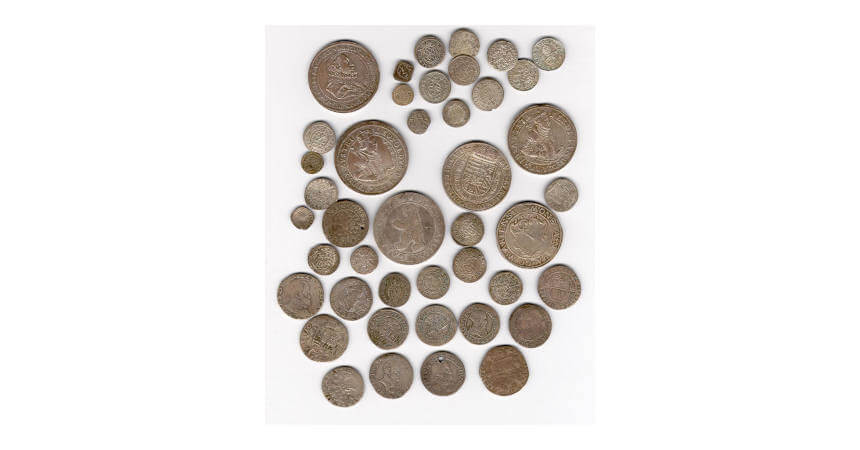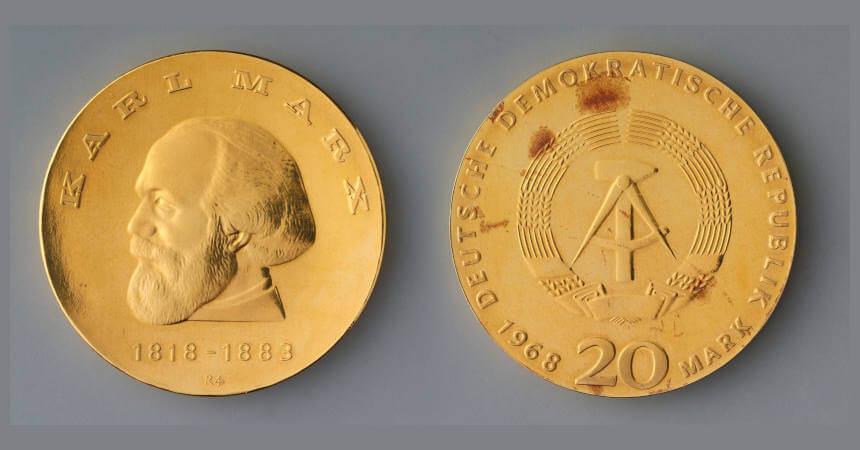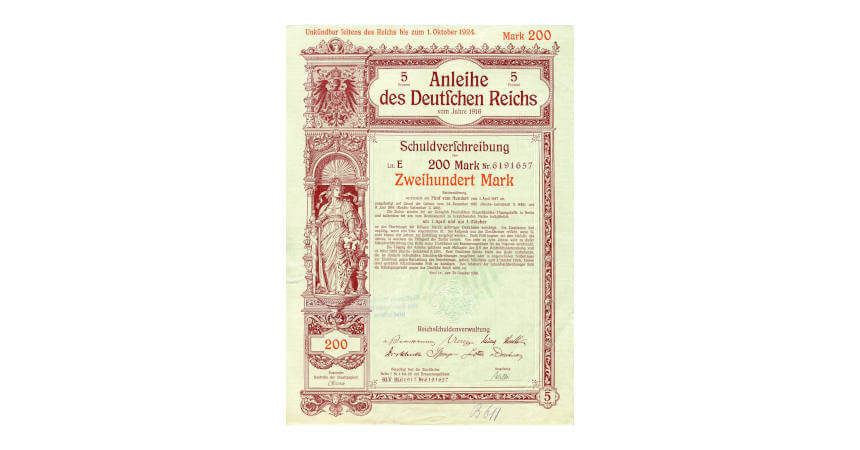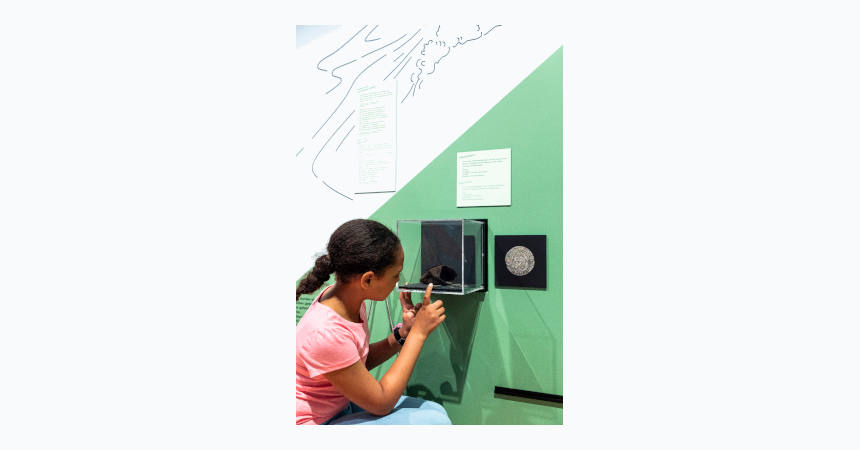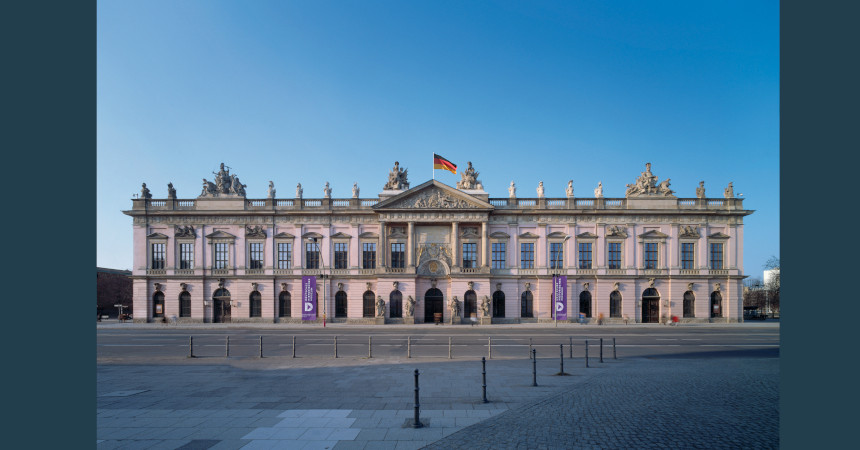German Historical Museum – Financial and Economic History Collection (Deutsches Historisches Museum)
Wenn es kein Logo gibt, wird diese Spalte einfach leer gelassen. Das Bild oben bitte löschen.
(Dieser Text wird nicht dargestellt.)
Zeughaus, Unter den Linden 2
10117 Berlin
Phone: +49 30 20304-129
Background
The Financial and Economic History Collection of the German Historical Museum (Deutsches Historisches Museum, DHM) emerged in 2020 from the former Numismatic Collection, which was formed in 1991 by merging the MfDG collection with the numismatic holdings of the Deutsches Historisches Museum, which had been acquired since 1987. The origins of the collection can be traced back to the Royal Armoury: on 28 June 1888, by order of the Minister of War, the first commemorative coins were transferred to the Armoury. Although they were completely lost during the war, parts of them were returned to the museum in the 1990s. Since 1952, the MfDG had received numerous numismatic objects, which in 1977 were transferred from the Department of Documents, Badges, Plaques and Medals (APM) to form an independent numismatic collection. Numismatic objects were also anchored in the concept of the German Historical Museum, founded in 1987. The aim was not to create an independent numismatic collection, but rather to create a rich numismatic collection whose exhibits would be linked to other information on economic and financial history in the themed rooms intended for the exhibitions. In 1994, coins, medals and banknotes from former imperial possessions (the so-called Linz Collection) were acquired. Since 2007, historical securities have also been concentrated in the numismatics section. The collection is responsible for the administration of the DHM’s non-profit foundation for historical German-language shares of the Walter Martius family and for the permanent loan of the Walter Martius collection of historical shares. Since 2018, the DHM has received German Reich bonds (1933-1945) and international historical securities (non-valeurs) from the Federal Office for Central Services and Unresolved Property Issues (BaDV).
The Collection
The collection of financial and economic history currently comprises some 90,000 mainly numismatic objects from late antiquity to the present day. The collection of coins, stamps and tokens illustrates the most important stages of German and European monetary history. The Kornöd hoard from the Thirty Years’ War is particularly valuable. The collection includes emergency coins (16th to 20th century), pfennigs and jetons (15th to 19th century). The holdings include more than 700 pfennigs, including a chronologically complete lot of ‘history pfennigs’ illustrating the battles in the Habsburg Netherlands from 1568 to 1648. Among the coins from the German Democratic Republic (GDR) is the unique gold 20-mark piece with the image of Karl Marx, which was presented by the State Bank to the Chairman of the State Council Walter Ulbricht (1893-1973) on the occasion of his 75th birthday in 1968. Another focus is on medals and plaques from the 16th century to the present day, including extensive holdings on the history of the labour movement and a collection of French medals relating to the revolutions of 1789-1870. The banknote collection illustrates the main features of the development of paper money from the 18th century to the present day. Special groups in the collection include assignats from the French Revolution, World War I officer’s and prisoner of war camp banknotes, foreign banknotes under German occupation, notes from concentration camps up to 1945, East German prisoner of war money, so-called LPG money from East German agricultural production cooperatives, inflation banknotes with political and anti-Semitic propaganda imprints, and art money. The acquisition of Wolfgang Haney’s collection led to a significant increase in the area of money substitutes and coupons from German concentration camps and ghettos from 1933 to 1945. The collection of historical securities includes documents from 200 years of economic history.
Events
The permanent exhibition at Deutsches Historisches Museum is currently being redesigned and will feature many numismatic items from the collection. The collection is also presented and published in the DHM’s temporary exhibitions, most recently in the exhibitions “Saving. History of a German Virtue” (2018), “1917! Revolution. Russia and Europe” (2017/2018), “Roads not Taken. Or. It Could Have Been Different” (2022) or “Into the Painting! A journey through time for children” (2024). There are numerous loans and permanent loans to other museums and exhibitions. Around 300 new objects are added to the collection each year, mostly through donations. Through its collection management, the DHM is involved in the scientific advisory board of the next congress of the International Numismatic Council in 2027, as well as in ICOMON and the Numismatic Society of Berlin. In addition to the development of exhibitions, the focus is on responding to enquiries and on international and national networking.
Literature (Selection)
Kunzel, Michael: Geschichtsmedaillen und Plaketten aus der Sammlung des Deutschen Historischen Museums. year 6, issue 17, Berlin 1996
Kunzel, Michael: Der Fund von Kornöd 1956, vergraben ab 1640, in: Geldgeschichtliche Nachrichten, year 53, May 2018, issue 297, pp. 148-157
Reyels, Lili: Vor 30 Jahren zirkulierte im Berliner Bezirk Prenzlauer Berg das „Knochengeld“, in Geldgeschichtliche Nachrichten, year 59, March 2024, issue 332, pp. 80-85
The German version of this text was provided by Dr. Lili Reyels, head of the Financial and Economic History Collection at Deutsches Historisches Museum Berlin.







